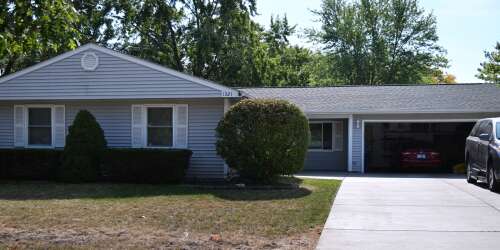The conversion of single-family houses into group homes in residential neighborhoods throughout the suburbs is becoming a popular alternative to traditional institutional living arrangements for both nonprofits and businesses serving elderly and disabled clients.
A 2021 Northwest Municipal Conference survey of its members identified 14 suburbs permitting group homes for particular populations, largely those with disabilities.
However, the conversion of homes into assisted living centers for seniors is becoming increasingly prevalent. Schaumburg has seen two proposals in the past year alone. There are also online seminars offered to entrepreneurs looking to flip homes and turn them into assisted living centers, aimed at the nation’s aging population.
Regulations vary in towns that allow such conversions. Some require approval from a village board or city council, while other towns don’t require such approval because these uses are already allowed in its residential code. But all enforce rules against external changes to the houses that would identify them as group homes.
“I think this is a great alternative for those that want to do that,” Schaumburg Mayor Tom Dailly said of such conversions. “I have no objection to them. I certainly wouldn’t want to flood the village with them.”
Schaumburg’s latest proposal for a group home is its second this year that’s specifically for senior residents. The first was withdrawn after a mortgage issue was uncovered and never received a board vote.
Schaumburg already has four group homes run by three nonprofit agencies, but the new proposal faces a negative 5-2 recommendation from the plan commission and concerns from neighbors as well.
Those four already operating in Schaumburg include two by Little City Foundation and one each by Shelter, Inc. and WINGS Program Inc.
One of Little City Foundation’s two Community Integrated Living Arrangements in Schaumburg. The agency operates a total of 16 of the group homes for its adult clients with intellectual and developmental disabilities across the Northwest suburbs.
Courtesy of Little City Foundation
The village’s planning staff is recommending approval of the latest conversion proposal, noting the previous four group home conversions blend into their neighborhoods and have generated no complaints.
Schaumburg trustees on Dec. 10 will consider Savannah Senior Living’s proposed use of the house at 1321 Elm Drive as group home in which a maximum of six senior residents would occupy the ranch house’s four bedrooms and two full bathrooms while looked after by caregivers on rotating eight-hour shifts.
Dailly believes the chief concern relates to Savannah Senior Living being a for-profit business undertaking such a project for the first time. He doesn’t consider those issues alone enough to reject the project.
A previously proposed site for a senior group home in Schaumburg at 129 Millis Lane was withdrawn this year after it was discovered the house’s Fannie Mae-backed loan prohibited any other use than traditional owner occupancy.
John Starks/[email protected]
Savannah Senior Living officials did not respond to a request for comment.
Officials in several other towns where these group home conversions are allowed can’t recall any type of complaint about the operations.
Arlington Heights has 14 such group homes. Most serve disabled clients, but one is a sheltered care home that doesn’t require skilled or intermediate nursing services, the village’s Housing Planner Nora Boyer said.
While proposals for such group homes in Arlington Heights have generated some advance questions and concerns by neighbors over unknowns, they have not caused complaints once they’ve been in operation, she reiterated.
“You’ll be driving down a neighborhood and never know we’re there apart from a van picking people up or dropping them off,” said Little City Foundation CEO Rich Bobby.
Little City operates 16 of what it calls Community Integrated Living Arrangements (CILAs) across the Northwest suburbs for its adult clients with intellectual and developmental disabilities, Bobby said.
Such homes meet the agency’s goals of integrating clients into the community, making sure everyone has a friend and working on the building of skills to thrive in life.
“At the core, it’s about inclusion and the ability to mingle with society,” Bobby said.
Among the factors that make a house attractive as a potential CILA for Little City is a lack of stairs, an adequate number of bedrooms and bathrooms, a large kitchen and an open living area.
While the intention of the homes is to blend in, a degree of engagement with neighbors is sought in advance to paint an accurate picture of those who are going to live there.
Bobby shared what he thought was a good approach for anyone unfamiliar with group homes to overcome their anxiety.
“I would say be curious, ask questions, and seek to understand,” he said.
